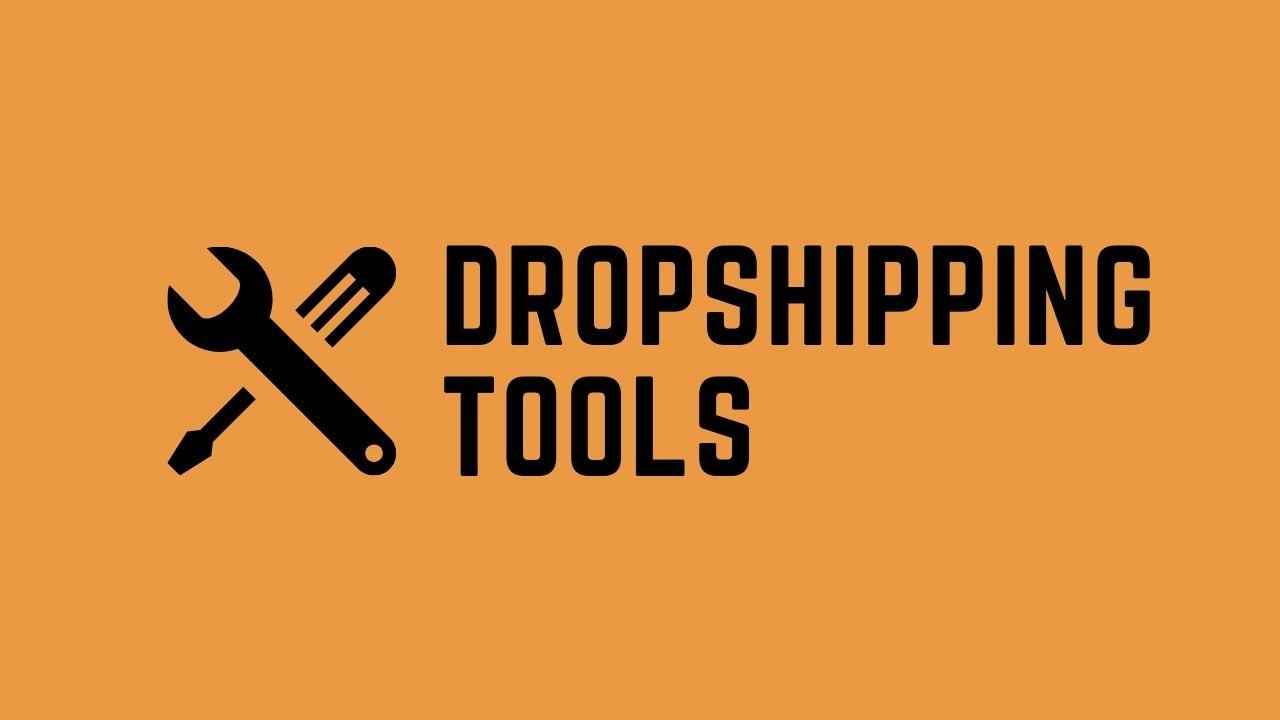
Introduction
Hey there, aspiring entrepreneur! If you’ve ever dreamed of running your own online store without the hassle of managing inventory or shipping logistics, you’re in the right place. Welcome to the world of dropshipping automation! In today’s fast-paced digital marketplace, finding ways to streamline your business operations is essential to stay ahead of the game. With dropshipping automation, you can focus on what really matters—growing your brand and connecting with customers—while leaving the nitty-gritty tasks to the experts.
In this ultimate guide, we’ll walk you through everything you need to know about dropshipping automation, from the basics to advanced strategies. Plus, we’ll introduce you to 15 top-notch tools that can transform your business and take your dropshipping game to the next level. So, whether you’re a seasoned seller or just starting out, get ready to unlock the secrets of efficient, profitable dropshipping. Let’s dive in and discover how you can automate your success!
Understanding Dropshipping Automation and Its Benefits
Dropshipping automation is revolutionizing the way entrepreneurs manage their businesses, allowing them to focus on growth and strategy rather than tedious day-to-day operations. By leveraging technology, dropshipping automation streamlines various processes involved in running an online store, making it easier to scale up without sacrificing quality or customer satisfaction.
One of the primary benefits of dropshipping automation is the significant time savings it provides. Traditional e-commerce models often require extensive hours spent on inventory management, order processing, and customer service. With automated tools, these tasks can be handled with minimal human intervention. This allows business owners to dedicate their time to marketing, improving their product offerings, and enhancing the overall customer experience.
Moreover, dropshipping automation ensures a higher level of accuracy in fulfilling orders. Mistakes in order fulfillment can lead to customer dissatisfaction and lost sales. Automated systems reduce the risk of human error by integrating directly with suppliers, ensuring that the right products are shipped to the right customers every time. This seamless connection between your store and your suppliers fosters a more reliable business model.
Another compelling aspect of dropshipping automation is the ability to scale operations effortlessly. As your business grows, managing increased order volumes can become overwhelming. Automated processes allow you to handle this growth without needing to hire additional staff. This scalability is particularly beneficial for entrepreneurs looking to expand their product lines or target new markets without the corresponding increase in operational complexity.
Automated tools also enhance inventory management. Keeping track of stock levels can be a daunting task, especially when dealing with multiple suppliers. Automation solutions can provide real-time inventory updates, allowing you to avoid stockouts and overselling. This transparency not only improves your operational efficiency but also builds trust with your customers, who will appreciate timely updates about product availability.
Additionally, dropshipping automation can lead to improved customer service. Automated systems often include features such as chatbots and email automation, which can handle customer inquiries and issues around the clock. This ensures that your customers receive prompt responses, enhancing their shopping experience and increasing the likelihood of repeat business. A satisfied customer is your best marketing tool, and automation can help you keep them happy.
Lastly, integrating automation tools into your dropshipping business can lead to better analytics and reporting. Understanding your sales trends, customer preferences, and operational efficiency is crucial for making informed business decisions. Automated systems can provide comprehensive reports that highlight key performance indicators, enabling you to fine-tune your strategy and maximize profitability.
dropshipping automation is not just a trend—it’s a game-changer. By embracing automation, you can save time, reduce errors, scale effortlessly, manage inventory effectively, improve customer service, and gain valuable insights into your business. With the right tools, you can transform your dropshipping venture into a sustainable and profitable enterprise.
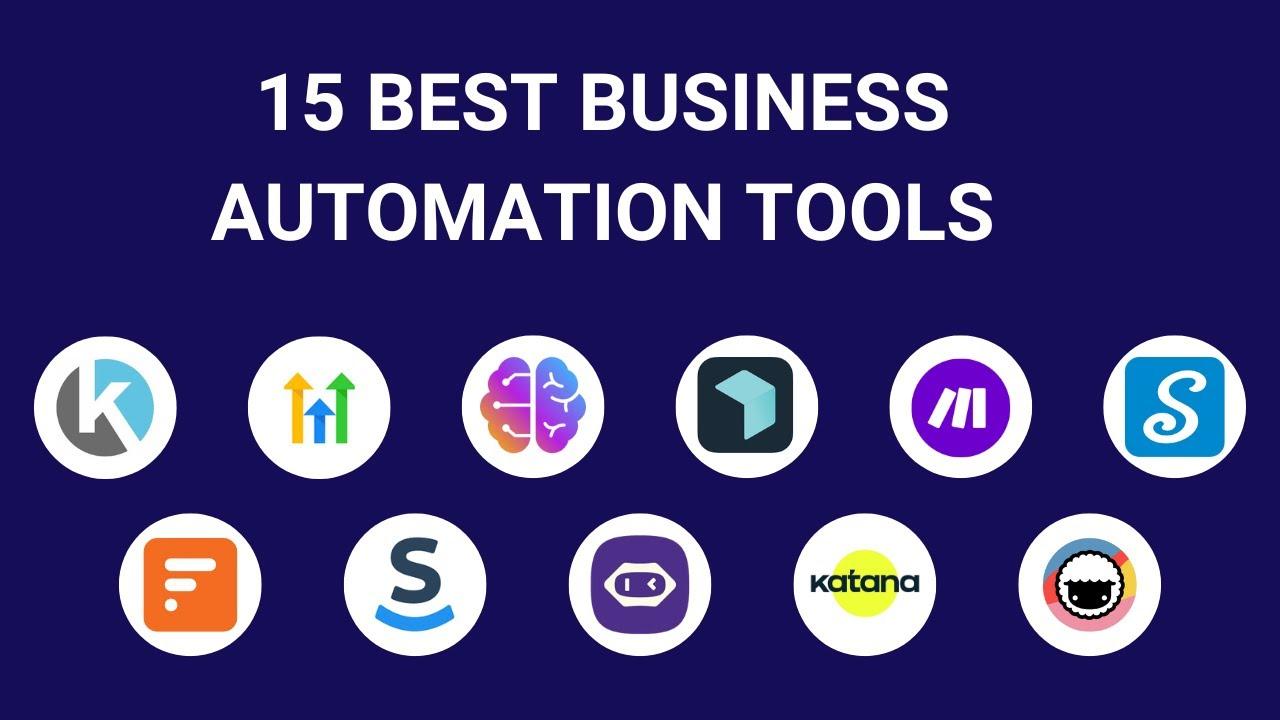
Key Features to Look for in Automation Tools
When diving into the world of dropshipping automation, it’s essential to choose tools that will streamline your operations and boost your efficiency. Here are some key features that can make a significant difference in your automation toolkit:
- Integration Capabilities: The ability to seamlessly integrate with your eCommerce platform, payment gateways, and shipping services is crucial. Look for tools that connect effortlessly with popular platforms like Shopify, WooCommerce, or BigCommerce.
- User-Friendly Interface: A clean and intuitive interface can save you hours of frustration. Choose tools that don’t require a steep learning curve, allowing you to get started quickly without extensive training.
- Inventory Management: Effective inventory management is vital for dropshipping. Look for tools that provide real-time tracking, automatic stock updates, and alerts for low inventory levels to prevent overselling.
- Order Processing Automation: The ability to automate order processing can significantly reduce human error and processing time. Ensure the tool allows for bulk order processing and automatic fulfillment notifications.
- Pricing Automation: Dynamic pricing features can help you stay competitive. Tools that allow for automatic price adjustments based on market trends or competitor pricing are invaluable.
- Reporting and Analytics: In-depth reporting tools can give you insights into sales trends, customer behavior, and inventory performance. Choose tools that offer customizable dashboards and easy-to-read reports.
- Customer Support: Reliable customer support can make all the difference. Check for 24/7 support options, comprehensive FAQs, and user community forums where you can seek assistance.
- Scalability: As your business grows, your automation tools should grow with you. Opt for solutions that can handle increasing volume without sacrificing performance.
Additionally, consider the cost-effectiveness of the automation tools you’re evaluating. Some tools may offer a broad range of features, but if they come with a hefty price tag, it’s important to weigh the benefits against your budget. A good practice is to create a comparison table to visualize the different features and pricing:
| Tool Name | Pricing | Key Features |
|---|---|---|
| Tool A | $29/month | Inventory Management, Order Processing |
| Tool B | $49/month | Analytics, Integration |
| Tool C | $99/month | Customer Support, Scalability |
By focusing on these essential features, you’ll be better equipped to select the right dropshipping automation tools that fit your business needs. This thoughtful approach can lead to increased efficiency, reduced costs, and ultimately, higher profits.

How to Choose the Right Products for Your Dropshipping Business
When embarking on your dropshipping journey, selecting the right products is paramount to your success. The products you choose will not only determine your store’s profitability but also shape your brand’s identity. Here are some key factors to consider when making your selection:
- Market Research: Begin by conducting thorough market research. Understand current trends, consumer preferences, and gaps in the market. Utilize tools like Google Trends and social media insights to gauge what products are gaining traction.
- Profit Margins: Examine potential profit margins. After accounting for all costs—product price, shipping, and platform fees—ensure that the profit margin is sustainable. A good rule of thumb is to aim for at least a 30-50% margin.
- Product Quality: Always prioritize quality over quantity. Opt for products that have positive reviews and a proven track record. This builds customer trust and reduces return rates, which is crucial for maintaining a profitable business.
- Supplier Reliability: Partner with reliable suppliers who can consistently deliver quality products on time. Look for suppliers with strong reputations and good communication, as this can save you from potential headaches.
- Niche Selection: Consider focusing on a specific niche that interests you or aligns with your expertise. This can help you connect with a more targeted audience and differentiate your store from competitors.
Additionally, it’s wise to validate your product ideas before committing. You can do this through:
- Testing Products: Consider running small test orders before fully launching a product. This allows you to evaluate customer response and identify any logistical challenges.
- Surveys and Feedback: Engage with your audience through surveys or polls on social media. Their input can provide valuable insights into what products they would be interested in purchasing.
Another effective strategy is to analyze competitors in your chosen niche. Look at what they are selling, their pricing strategies, and customer feedback. Use this data to identify opportunities for differentiation. Aim for products that satisfy customer needs better than existing options.
consider seasonal trends. Some products may only sell well during specific times of the year. By preparing for these fluctuations, you can maximize profits by offering products that align with seasonal demands.
Ultimately, choosing the right products for your dropshipping business involves a combination of research, testing, and adaptability. By following these guidelines, you set a strong foundation for your venture, positioning yourself to thrive in the competitive landscape of dropshipping.

Setting Up Your Dropshipping Store for Automation Success
Establishing a successful dropshipping store requires more than just selecting products and setting prices. To truly thrive, you need to implement automation strategies that streamline your processes and free up your time. Here’s how to set your store up for automation success:
Choose the Right Platform
Your choice of eCommerce platform can significantly impact your ability to automate. Look for platforms that offer:
- Integration capabilities: Ensure that your platform can seamlessly connect with various automation tools.
- User-friendly interfaces: A straightforward dashboard will simplify your management tasks.
- Scalable features: As your business grows, your platform should be able to accommodate increased traffic and orders.
Integrate Essential Automation Tools
Once you’ve chosen your platform, it’s time to integrate tools that will help automate various aspects of your business. Consider these categories of software:
- Order Fulfillment: Automate the process of sending customer orders to suppliers.
- Email Marketing: Use tools that schedule and send emails based on customer behavior.
- Inventory Management: Implement systems that automatically update stock levels and notify you of low inventory.
Utilize AI and Chatbots
Incorporating artificial intelligence (AI) and chatbots can greatly enhance customer interaction:
- 24/7 customer support: Chatbots can handle customer queries at any time, improving satisfaction.
- Personalized recommendations: AI can analyze purchasing behavior and suggest products, increasing sales.
Automate Your Marketing Efforts
Marketing your dropshipping store doesn’t have to be a manual grind. You can automate:
- Social Media Posting: Schedule posts to maintain a consistent online presence.
- Ad Campaigns: Use tools that optimize ad placement and budget allocation based on performance data.
Track Your Success with Analytics
To ensure your automation strategies are effective, utilize analytics tools to monitor performance. Key metrics to focus on include:
| Metric | Description |
|---|---|
| Conversion Rate | Percentage of visitors who make a purchase. |
| Average Order Value | Average amount spent per transaction. |
| Customer Retention Rate | Percentage of repeat customers over time. |
By systematically tracking these metrics, you can make informed decisions about where to adjust your automation efforts. Utilize A/B testing to refine your approaches and optimize for better results.
Incorporating these strategies will position your dropshipping store for long-term success, allowing you to focus on growth while automation handles the day-to-day tasks. Commit to refining these processes, and you’ll soon find a significant improvement in efficiency and profitability.
Streamlining Order Management with Automation Solutions
Managing orders manually can be a daunting and time-consuming task, especially when you’re scaling your dropshipping business. Fortunately, automation solutions are here to revolutionize the way you handle your order management process. By integrating automation tools, you can streamline operations, reduce errors, and enhance customer satisfaction.
With the right automation solutions, you can:
- Automate Order Processing: Automatically process orders as soon as a customer makes a purchase. This ensures that your fulfillment centers receive the order in real time, minimizing delays.
- Manage Inventory Efficiently: Keep track of stock levels across multiple suppliers and update your online store accordingly. This prevents overselling and stockouts, ensuring you never miss a sales opportunity.
- Generate Shipping Labels Automatically: Save time by automatically generating shipping labels when an order is placed, allowing you to fulfill orders quickly and efficiently.
- Send Customer Notifications: Keep your customers informed with automated emails or text messages about their order status, shipping confirmations, and delivery updates.
One of the most significant advantages of automating your order management process is the reduction of human error. Manual data entry can lead to mistakes that may cost you both time and money. With automation, data is transferred seamlessly between systems, ensuring accuracy at every step. Additionally, automation tools often come with built-in reporting features that help you analyze your order data to make informed decisions about your business.
Here’s a quick overview of some key features to look for in dropshipping automation tools:
| Feature | Description |
|---|---|
| Real-Time Inventory Sync | Updates stock levels instantly across all platforms. |
| Order Tracking Integration | Automatically syncs tracking information with the customer. |
| Multi-Channel Support | Handles orders from different marketplaces and platforms. |
| Analytics Dashboard | Provides insights and reports for better decision-making. |
When choosing an automation solution, consider your specific needs as a dropshipper. Look for tools that cater to your business model while also offering scalability as you grow. Integration capabilities with your existing systems should also be high on your list to ensure a smooth transition and consistent workflow.
Incorporating automation into your order management not only improves efficiency but also enhances the overall customer experience. With faster processing times and reliable updates, customers are more likely to return, boosting your sales and brand reputation. As you explore the available tools, remember that investing in automation is an investment in the future of your dropshipping business.
Enhancing Customer Experience Through Automated Communication
In today’s fast-paced digital landscape, maintaining effective communication with customers is crucial for any business, especially in the dropshipping realm. One of the most impactful ways to enhance customer interactions is through automated communication, allowing you to stay connected with your audience without overwhelming your resources.
Imagine being able to send personalized messages at scale, respond to inquiries instantly, and keep your customers informed throughout their buying journey. This is possible through various automated communication tools that can streamline your processes and improve customer satisfaction. Here are some key benefits:
- 24/7 Availability: Automated systems ensure your customers can reach out and receive responses even outside of business hours, enhancing their experience significantly.
- Consistency: Automation provides a uniform communication style, ensuring that all customers receive the same level of service regardless of the time or platform.
- Personalization: With the right tools, you can tailor messages based on customer behavior, preferences, and past interactions, making your communication feel more personal.
- Efficiency: Freeing up your team’s time from repetitive tasks allows them to focus on more complex customer inquiries and relationship-building.
Utilizing chatbots is one of the most effective ways to implement automated communication. These intelligent systems can handle a variety of tasks, from answering FAQs to guiding customers through their shopping experience. By integrating chatbots into your dropshipping store, you can ensure that customers receive immediate assistance, which can lead to increased conversions and reduced cart abandonment rates.
Email marketing automation is another essential tool in your arsenal. By segmenting your audience and creating targeted campaigns based on their behavior, you can send timely updates, promotional offers, and abandoned cart reminders. This not only keeps your brand top-of-mind but also drives repeat purchases and customer loyalty.
To help you navigate the myriad of options available, consider the following top tools that can elevate your automated communication strategy:
| Tool | Purpose | Key Feature |
|---|---|---|
| HubSpot | Email Marketing | Personalized Workflows |
| Zendesk | Customer Support | AI Chatbots |
| Drip | E-commerce Marketing | Behavioral Targeting |
| Intercom | Live Chat & Messaging | Automated Responses |
| Mailchimp | Email Campaigns | Automation Triggers |
By leveraging these tools, dropshipping businesses can create a seamless communication experience that not only addresses customer needs promptly but also builds long-term relationships. The right automated communication strategy can differentiate your brand in a crowded market, driving both customer satisfaction and business growth.
Inventory Management Made Easy with Dropshipping Tools
Managing inventory can feel like a daunting task, especially for those new to the dropshipping model. Fortunately, dropshipping tools have revolutionized how we handle inventory, making it simpler and more efficient than ever before. With the right tools at your disposal, you can automate your inventory management, reduce errors, and improve your overall business performance.
One of the biggest advantages of using dropshipping tools is their ability to sync inventory across multiple platforms. This means you can keep your product listings updated in real-time, ensuring that your customers always see accurate stock levels. No more overselling or dealing with disappointed customers! Instead, you can focus on growing your business while the tools handle the nitty-gritty of inventory tracking.
Another critical feature of these tools is their centralized dashboard. This allows you to view all your products, suppliers, and stock levels in one place. By eliminating the need to toggle between different platforms, you save precious time and minimize the risk of errors. Plus, many tools offer intuitive interfaces that make navigating through your inventory a breeze.
When it comes to dropshipping, the ability to forecast demand is crucial. Some advanced tools utilize AI and machine learning algorithms to analyze sales trends and predict future inventory needs. This functionality helps you make informed decisions about which products to stock and when, allowing you to capitalize on emerging trends while avoiding overstocking or stockouts.
Here’s a quick look at some popular dropshipping tools that excel in inventory management:
| Tool Name | Key Feature | Price Range |
|---|---|---|
| Oberlo | Real-time inventory sync | Free to start |
| Spocket | Curated suppliers & local shipping | $24/month |
| Doba | Extensive supplier network | $29/month |
| Inventory Source | Automated product uploads | $99/month |
Using these tools not only enhances your efficiency but also allows you to focus on customer satisfaction. With reliable inventory management, you can ensure timely shipping and accurate order fulfillment, which are key components to retaining customers and building brand loyalty. Satisfied customers are more likely to return and recommend your store to others, creating a cycle of growth and success.
embracing dropshipping tools for inventory management is a game changer. They simplify complex processes, provide valuable insights, and ultimately free up your time to focus on strategic aspects of your business. As you explore the various options available, remember that investing in the right tools is essential to your long-term success in the dropshipping arena.

Integrating Your E-commerce Platform with Automation Software
can transform the way you manage your dropshipping business. Not only does it streamline operations, but it also enhances customer experience by ensuring that orders are processed swiftly and accurately. With the right tools, you can automate various tasks such as inventory management, order fulfillment, and customer communication, freeing up your time to focus on growth.
Imagine waking up to a notification that your latest orders have been processed automatically, with suppliers contacted and tracking information sent to customers without any manual input. This is the power of integration. By connecting your e-commerce platform with automation software, you can:
- Reduce human error: Automation minimizes mistakes in order processing and inventory tracking.
- Improve efficiency: Automated systems can handle multiple tasks simultaneously, speeding up your workflow.
- Enhance customer satisfaction: Quick responses and accurate order updates lead to happier customers.
- Scale your business: With less manual work, you can handle more orders and grow your business without the need for additional staff.
To integrate your e-commerce platform with automation software effectively, consider these steps:
- Choose the right automation tool: There are many tools available that cater to specific e-commerce platforms like Shopify, WooCommerce, or BigCommerce.
- Set clear objectives: Determine what tasks you want to automate—whether it’s inventory management, order processing, or customer support.
- Utilize APIs: Most automation software offers APIs that allow seamless integration with your e-commerce system. Familiarize yourself with these resources.
- Test thoroughly: Before going live, ensure that all processes work as intended. Test every aspect—order placement, inventory updates, and customer notifications.
Here’s a quick comparison of some popular automation tools and their unique features:
| Tool | Key Features | Ideal For |
|---|---|---|
| Zapier | Connects with thousands of apps, automates workflows | Small to medium businesses |
| Oberlo | Product sourcing, inventory management, order fulfillment | Dropshipping entrepreneurs |
| Shopify Flow | Automated workflows for Shopify stores | Shopify users |
| AutoDS | Product research, price monitoring, listing automation | Online sellers on multiple platforms |
By implementing automation, you not only save time but also create a more efficient workflow that can adapt to changing market demands. The combination of your e-commerce platform and automation software can lead to an impressive boost in productivity and profitability. Start exploring your options today and watch your dropshipping business flourish!

The Role of Data Analytics in Dropshipping Automation
In the fast-paced world of dropshipping, leveraging data analytics is no longer optional; it’s essential for staying competitive. With the right tools and strategies, you can transform raw data into actionable insights, truly automating your dropshipping business. By analyzing customer behavior, sales patterns, and market trends, you can make informed decisions that enhance efficiency and profitability.
Understanding Customer Behavior
Data analytics allows you to dive deep into customer preferences and purchasing habits. By tracking metrics such as:
- Purchase frequency
- Average order value
- Product views
- Abandonment rates
you can tailor your marketing strategies and product offerings to better meet the needs of your audience. For instance, if you notice a spike in interest for a particular product, you can increase stock levels or run targeted promotions, ensuring you capitalize on that demand.
Optimizing Supply Chain Management
Effective supply chain management is crucial in dropshipping. Data analytics enables you to monitor supplier performance, track inventory in real-time, and forecast demand accurately. By analyzing data across various suppliers, you can:
- Identify the most reliable suppliers
- Negotiate better terms based on historical performance
- Reduce lead times and fulfillment errors
This not only streamlines operations but also enhances customer satisfaction by ensuring orders are fulfilled quickly and accurately.
Enhancing Marketing Strategies
With data-driven insights, you can segment your audience and personalize marketing campaigns for maximum impact. Consider using A/B testing on email campaigns or social media ads to analyze which approaches yield the highest engagement rates. Tracking metrics such as:
- Click-through rates
- Conversion rates
- Cost per acquisition
will help you refine your strategies and allocate your budget more effectively, leading to improved ROI on your marketing efforts.
Forecasting Trends and Market Analysis
The dropshipping landscape is constantly evolving, and staying ahead of trends is critical. By utilizing data analytics tools, you can forecast market trends based on historical data and current consumer behavior. This foresight allows you to:
- Introduce new products before competitors
- Adjust pricing strategies based on market conditions
- Identify emerging niches that are ripe for investment
Being proactive rather than reactive will position your business as a leader in the industry.
Implementing Automation Tools
Integrating data analytics with automation tools can revolutionize your dropshipping business. Many platforms allow you to automate not just inventory management but also customer interactions based on data insights. For example, you can set up automated emails that target customers based on their shopping behavior, ensuring you reach them at the right moment with the right offer.
Utilizing data analytics in conjunction with automation ensures that your dropshipping enterprise runs smoothly, allowing you to focus on growing your business rather than getting bogged down in day-to-day operations. With each decision supported by solid data, you can confidently navigate the complexities of the market and build a thriving online store.

Maximizing Profits with Automated Pricing Strategies
In the fast-paced world of dropshipping, staying competitive requires more than just great products and effective marketing. One of the most effective ways to boost your revenue is by leveraging automated pricing strategies. By utilizing intelligent algorithms and real-time data analysis, you can maximize profits while minimizing the time spent on mundane pricing tasks.
Automated pricing tools can adjust your prices based on various factors, including:
- Market Demand: Prices can be tweaked automatically based on fluctuations in consumer demand.
- Competitor Pricing: Stay one step ahead by monitoring your competitors’ prices and adjusting yours accordingly.
- Inventory Levels: Optimize your pricing based on stock levels to clear out old inventory or capitalize on high-demand products.
One of the biggest advantages of automated pricing is the ability to implement dynamic pricing strategies. This means your prices can change in real-time, offering you the flexibility to respond to market changes instantly. For instance, if a competitor lowers their price, your tool can automatically adjust yours to remain competitive, ensuring that you don’t lose potential sales.
Additionally, these strategies can help you identify the optimal price points that maximize your margins. Many automated pricing solutions come equipped with A/B testing features that allow you to test different pricing strategies without manual intervention. By analyzing customer behavior in response to different prices, you can identify what resonates best with your target audience.
Furthermore, consider integrating a pricing strategy that incorporates psychological pricing techniques. Small changes, like pricing a product at $19.99 instead of $20, can significantly influence buying decisions. With automation, you can easily implement these strategies across your product range, driving better customer engagement and increased sales.
To implement automated pricing effectively, it’s essential to choose the right tools. Here’s a quick comparison of some popular automated pricing solutions:
| Tool | Key Features | Pricing |
|---|---|---|
| RepricerExpress | Real-time repricing, competitor monitoring | Starts at $55/month |
| Informed.co | Automated pricing rules, price testing | From $59/month |
| Seller Republic | Customizable pricing strategies, analytics | From $49/month |
When selecting a tool, ensure it aligns with your business goals and integrates seamlessly with your existing eCommerce platform. Remember, the key is to maintain flexibility and adaptability in your pricing strategy, allowing you to respond swiftly to market changes.
don’t forget to monitor the results of your automated pricing strategies regularly. Analyze performance metrics to see what’s working and what isn’t. By staying on top of your pricing strategy and making data-driven decisions, you can ensure that your dropshipping business remains profitable and competitive in an ever-evolving marketplace.
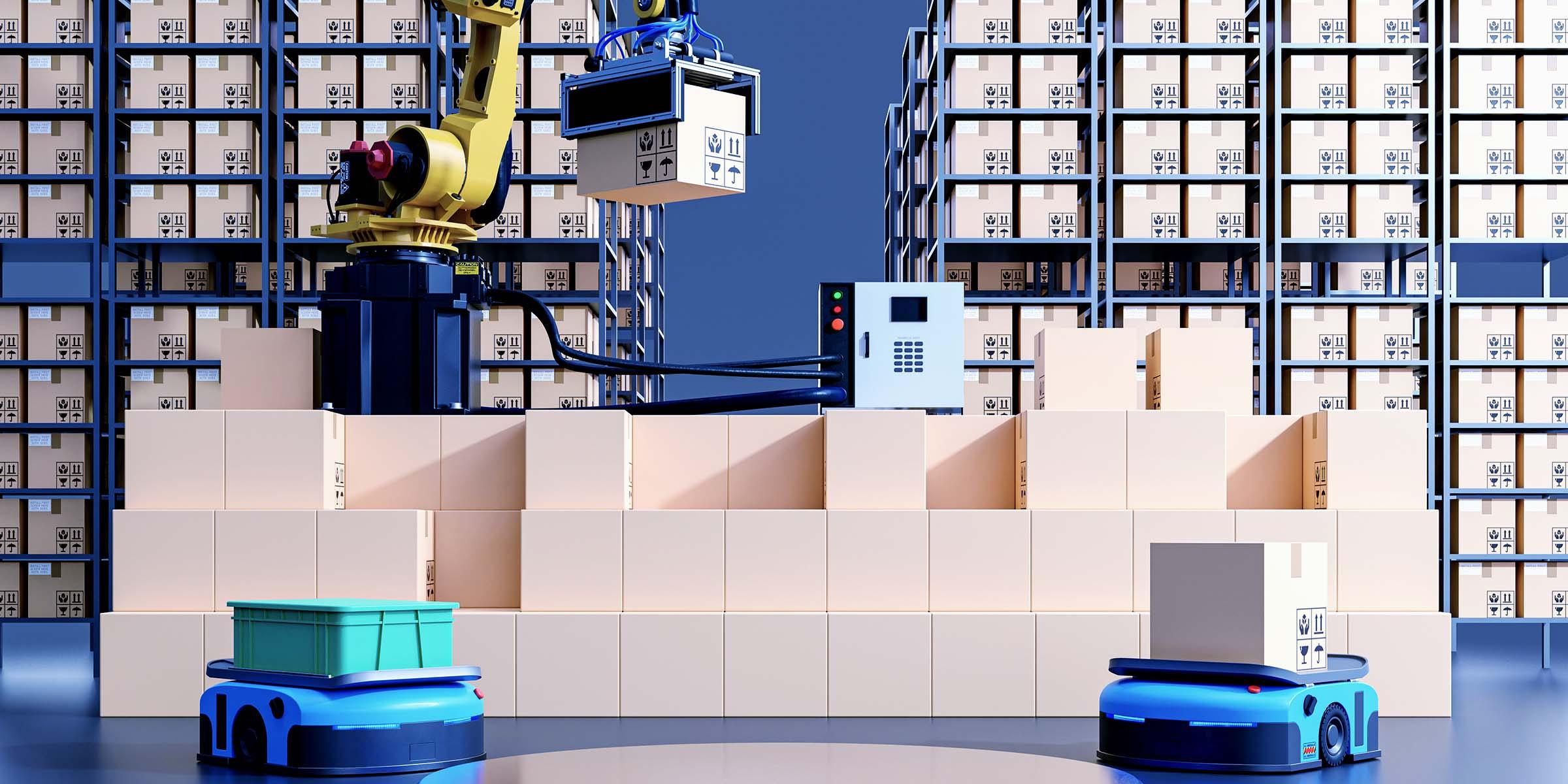
Top 15 Tools for Dropshipping Automation You Can’t Ignore
When it comes to maximizing efficiency in your dropshipping business, automation tools are your best friends. They not only save you time but also help streamline operations, allowing you to focus on growth and customer satisfaction. Here are some essential tools for automating various aspects of your dropshipping venture:
- Oberlo: This tool integrates seamlessly with Shopify, making product importation and order fulfillment a breeze. With its user-friendly interface, you can find trending products in seconds.
- DSers: A great alternative for Shopify users, DSers automates order placement and inventory management, ensuring you never run out of stock.
- Spocket: Focused on quality US and EU suppliers, Spocket allows for fast shipping times and integrates with popular eCommerce platforms.
- AliDropship: If you’re using WordPress, AliDropship is perfect for automating your dropshipping business directly from AliExpress.
- AutoDS: This all-in-one dropshipping tool supports multiple platforms and helps you manage everything from product sourcing to order fulfillment.
Data management is another critical area where automation shines. Here are some tools that excel in analytics and data tracking:
- Google Analytics: Essential for tracking customer behavior, Google Analytics provides insights into where your traffic is coming from and how users interact with your site.
- Crazy Egg: This tool offers heatmaps and A/B testing to help you understand what elements of your website are performing well and which need improvement.
- Optimizely: A powerful A/B testing platform that helps you optimize your website’s performance and drive conversions through data-driven decisions.
Customer service also benefits from automation. Here are some notable tools to enhance your customer interactions:
- Zendesk: A comprehensive customer support tool that allows you to manage inquiries and support tickets efficiently.
- Freshdesk: Another excellent option for support tickets, Freshdesk integrates with various platforms, offering a user-friendly interface for both customers and agents.
- Chatbot Services: Consider implementing AI-driven chatbots like Drift or Intercom to handle FAQs, providing instant responses and freeing up your team for more complex queries.
Lastly, don’t overlook tools that help with email marketing automation, which is crucial for maintaining customer relationships:
- Mailchimp: Perfect for beginners, Mailchimp offers easy automation features to create targeted email campaigns.
- Klaviyo: Designed specifically for eCommerce, Klaviyo provides advanced segmentation and personalized email flows that can significantly increase your sales.
- Sendinblue: A budget-friendly option that combines email marketing with SMS campaigns, allowing for comprehensive customer outreach.
By leveraging these automation tools, you can streamline your dropshipping operations, improve customer engagement, and ultimately drive more sales. The key is to find the right mix of tools that align with your business goals and customer needs.

Real-Life Success Stories of Automated Dropshipping Businesses
In the world of e-commerce, automated dropshipping has emerged as a game-changer, enabling entrepreneurs to streamline their operations and focus on growth. Here are some inspiring success stories from real-life businesses that have embraced this innovative model.
1. The Fitness Niche: FitGearPro
FitGearPro, a dropshipping business focused on fitness gear and equipment, leveraged automation to scale rapidly. By integrating tools like Oberlo and Shopify, they managed to automate product sourcing and order fulfillment. Within a year, they achieved:
- Monthly revenue growth of 300%
- Reduced manual workload by 70%
- Expanded product catalog from 50 to over 500 items
This allowed the founder to shift focus toward marketing strategies that further increased their customer base.
2. The Fashion Industry: TrendyThreads
TrendyThreads, a women’s fashion dropshipping store, utilized automation tools to enhance their customer service and inventory management. With the help of Zendrop, they automated shipping processes and improved delivery times. This led to:
- A 40% increase in customer satisfaction ratings
- Reduction in return rates by 15%
- A thriving social media presence with a following growth of 500%
By focusing on branding and social engagement, TrendyThreads turned their passion into a profitable venture.
3. The Home Decor Market: CozyNest
CozyNest capitalized on the growing trend of home decor by automating their operations with Printful and WooCommerce. They automated their print-on-demand services, which allowed them to offer custom products without holding inventory. Their results included:
| Milestone | Result |
|---|---|
| Yearly Revenue | $250,000 |
| Customer Base Growth | 10,000+ new customers |
| Order Processing Time | 48 hours |
Their focus on unique products and effective automated marketing campaigns drove their success.
4. Tech Gadgets: GadgetGalaxy
GadgetGalaxy is a prime example of utilizing automation to tap into tech enthusiasts. By integrating DSers for product sourcing and automation, their operations became seamless. Key achievements include:
- Expanded product offerings to over 1,000 gadgets
- Increased sales conversion rates by 25%
- Entered international markets without additional manpower
This expansion was made possible by a well-structured, automated logistics chain that handled everything behind the scenes.
These success stories show that with the right tools and strategies, anyone can thrive in the dropshipping space. Each of these businesses not only automated their processes but also made data-driven decisions to optimize their growth, proving that the sky’s the limit with dropshipping automation.
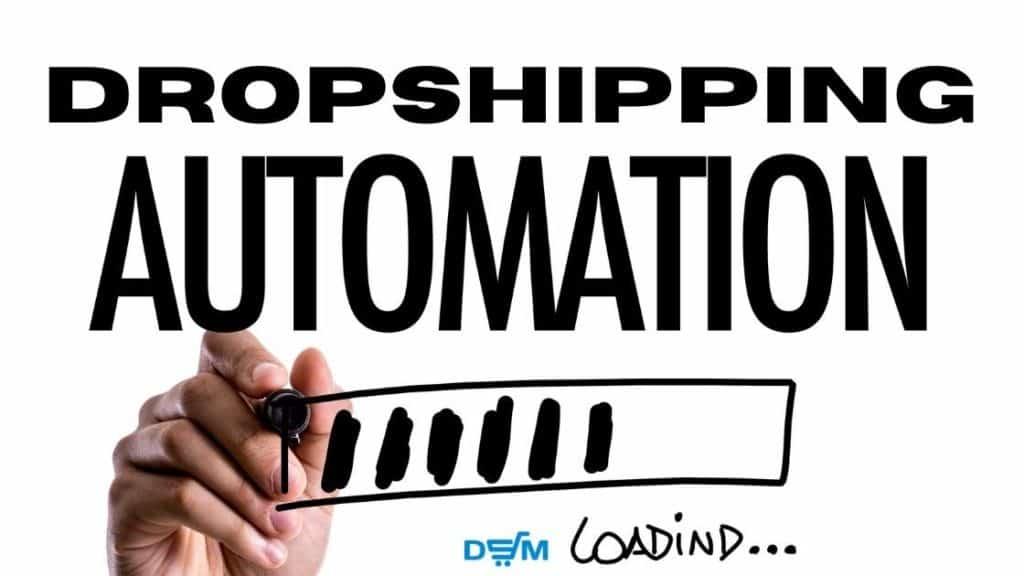
Common Mistakes to Avoid When Automating Your Dropshipping
Automating your dropshipping business can streamline operations, but several common pitfalls can derail your efforts if you’re not careful. One major mistake is overlooking the importance of research. Many entrepreneurs jump into automation tools without thoroughly understanding their business needs or the capabilities of the tools available. A hasty selection can lead to inefficiencies that hinder rather than help your operations.
Another frequent error is neglecting supplier communication. Automation can create a false sense of security, leading you to rely solely on automated systems for updates. However, maintaining regular communication with your suppliers is crucial for resolving issues quickly, ensuring product availability, and fostering strong relationships. Regular check-ins can prevent misunderstandings and enhance your service reliability.
Many dropshippers also underestimate the importance of test runs. Implementing automation without testing can result in significant problems down the line. For instance, automating order fulfillment processes before verifying that everything works seamlessly can lead to incorrect orders or shipping delays. Always run tests to identify any glitches and ensure your automation integrates smoothly with your existing systems.
In addition, failing to monitor performance metrics can be detrimental. Automation should not mean a complete hands-off approach. Regularly review key performance indicators to understand how your automated processes are impacting sales, customer satisfaction, and overall efficiency. This ongoing analysis allows you to make necessary adjustments and stay ahead of any potential issues.
Furthermore, one should be wary of over-automation. While automation can save time, too much can lead to a loss of the personal touch that customers value. Balance is key; ensure you maintain human interaction where it counts, such as in customer service or during critical sales periods. This human element can significantly enhance customer loyalty and satisfaction.
Lastly, underestimating the learning curve associated with automation tools is another common blunder. Each software comes with its own set of features and intricacies. Take the time to invest in training for you and your team. A thorough understanding of how to utilize these tools will maximize their effectiveness and ensure you’re getting the most return on your investment.
| Common Mistakes | Description |
|---|---|
| Overlooking research | Choosing tools without understanding business needs. |
| Neglecting communication | Failing to maintain supplier relationships. |
| Lack of testing | Implementing without verifying functionality. |
| Ignoring metrics | Not reviewing KPIs for ongoing adjustments. |
| Over-automation | Missing the human touch in customer interactions. |
| Underestimating learning curves | Not investing in proper training for tools. |
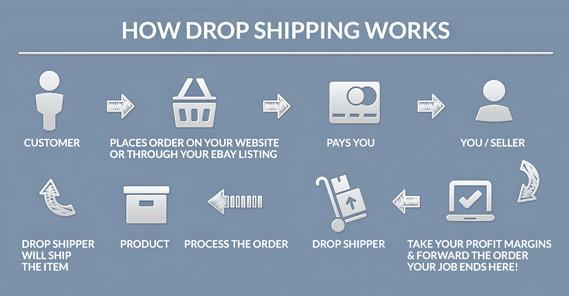
Future Trends in Dropshipping Automation You Should Know
As the e-commerce landscape evolves, so does the world of dropshipping. Automation is no longer just a luxury; it’s becoming a necessity for businesses that want to stay competitive. Here are some future trends that are set to shape the dropshipping automation landscape:
- AI-Powered Product Selection: Advanced algorithms will soon allow retailers to predict trends and automatically select products that are likely to perform well. This means less guesswork and more data-driven decisions.
- Enhanced Customer Experience: Chatbots and personalized recommendations will become more sophisticated, allowing businesses to offer tailored shopping experiences that boost conversion rates.
- Integration with Augmented Reality: Imagine allowing customers to visualize products in their own space before purchasing. Augmented reality tools are on the rise, making it easier for customers to make buying decisions.
- Improved Supply Chain Transparency: Blockchain technology is set to revolutionize inventory management, providing real-time data on product availability and shipment tracking, enhancing trust and efficiency.
Additionally, as more businesses turn to dropshipping, the competition will increase. To stand out, automation tools will need to become more streamlined and user-friendly. The development of all-in-one platforms that integrate multiple functions—from order processing to inventory management—will become increasingly popular.
| Trend | Description |
|---|---|
| AI in Marketing | Utilizing machine learning to optimize ad campaigns and target audience segments more effectively. |
| Voice Commerce | With smart speakers gaining popularity, voice-activated shopping will become a norm, simplifying the purchasing process. |
| Subscription Models | Automating subscription services can lead to recurring revenue and stronger customer loyalty. |
The integration of machine learning and big data analytics will allow dropshippers to forecast demand with remarkable accuracy. This will not only reduce excess inventory but will also help businesses understand their customers’ purchasing behavior better. As platforms become more intuitive, even those without technical backgrounds will harness the power of automation.
As these trends unfold, it is essential for entrepreneurs to stay informed and adapt to an ever-changing market. Investing in automation tools that align with these trends will be key to thriving in the dynamic dropshipping space. The future is bright for those ready to embrace innovation and automation.
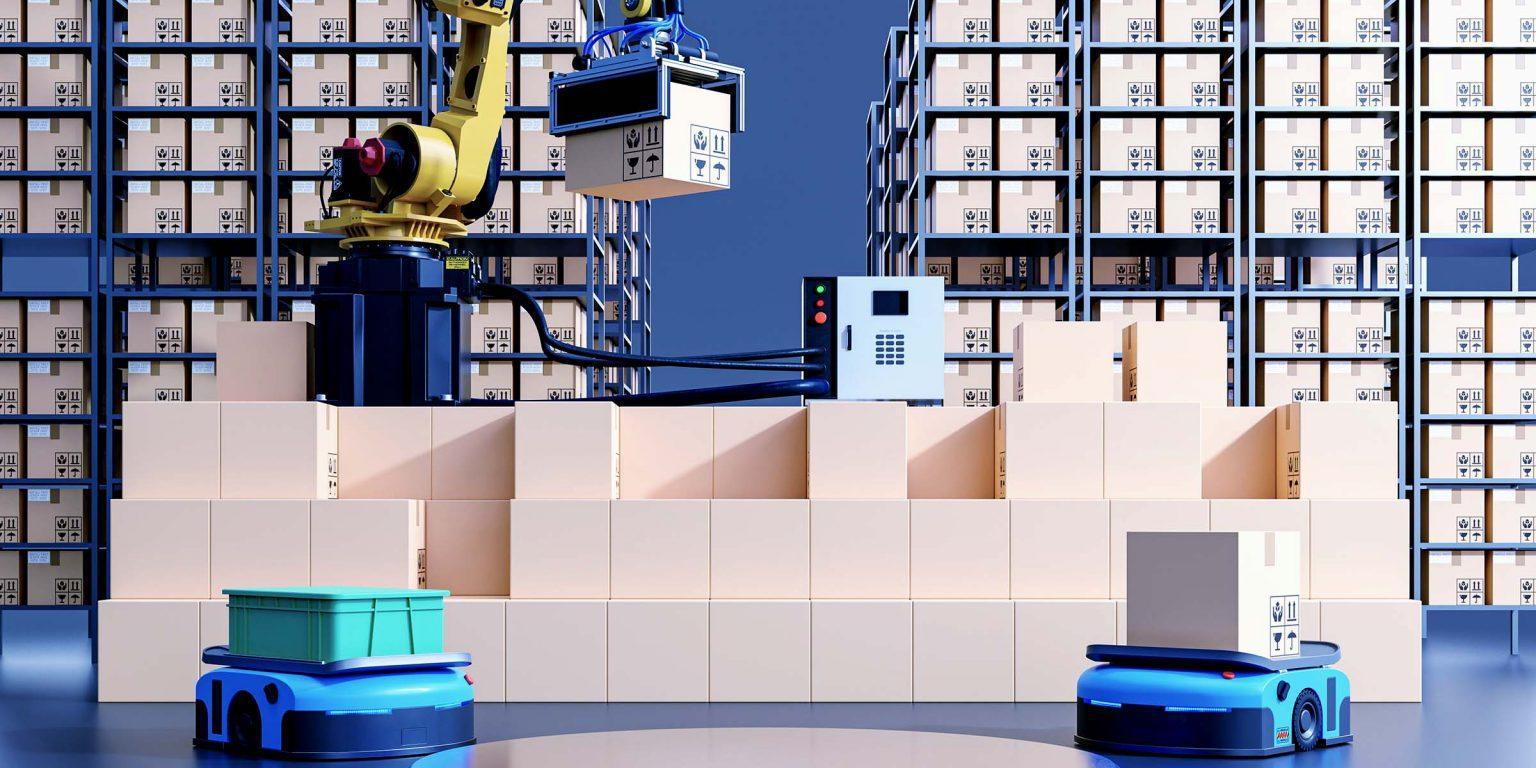
Taking the Leap: Is Dropshipping Automation Right for You?
As you consider entering the world of dropshipping, the allure of automation can be strong. But is it the right fit for your business model and personal goals? Automation offers numerous benefits, but it may not be the perfect solution for everyone. Below, we explore the key considerations to help you decide whether dropshipping automation aligns with your entrepreneurial aspirations.
Understanding Your Business Needs
Before diving into automation, take a moment to assess your specific business needs. Automation can streamline various processes, but it’s essential to identify which elements of your dropshipping business would benefit the most. Here are a few areas to evaluate:
- Order Management: Are you struggling to keep track of orders from multiple suppliers?
- Inventory Tracking: Do you find it challenging to manage stock levels and product listings?
- Customer Support: Are you overwhelmed with customer inquiries and post-purchase follow-ups?
Cost vs. Benefit Analysis
Implementing automation tools often comes with an upfront investment. It’s vital to conduct a cost-benefit analysis to ascertain if the potential savings and efficiency gains outweigh the costs involved. Consider the following factors:
- Subscription Fees: Most automation tools require a monthly subscription. Calculate how this will impact your bottom line.
- Time Savings: Estimate how much time you could save by automating repetitive tasks.
- Increased Sales: Automation can lead to faster processes, potentially improving sales through enhanced efficiency.
Your Technical Comfort Level
Not everyone is a tech wizard, and that’s okay! Understanding your comfort with technology is crucial when considering automation. Some tools have user-friendly interfaces, while others may require more technical know-how. Ask yourself:
- Am I comfortable learning new software?
- Do I have the time to invest in training?
- Will I need customer support for setup and maintenance?
Long-term Goals
Think about your long-term vision for your dropshipping business. Are you looking to scale quickly, or do you prefer a more gradual growth approach? Automation can facilitate rapid scaling, but it also requires ongoing management and adaptation. Here are some questions to ponder:
- Do I plan to expand my product range significantly?
- Am I prepared to handle increased customer service demands?
- Will I invest in marketing to support automated processes?
Experimenting with Automation
If you’re still on the fence, consider starting small. Many dropshipping automation tools offer free trials or entry-level plans that allow you to get a feel for the platform without a hefty commitment. Testing the waters can provide invaluable insights into how automation can fit into your existing operations. Keep an eye on:
- User Experience: Is the tool intuitive and easy to integrate?
- Impact on Efficiency: Do you notice a decrease in workload?
- Customer Feedback: Are your customers responding positively to faster service?
Ultimately, the decision to embrace dropshipping automation is a personal one. By carefully evaluating your business needs, technical skills, and long-term objectives, you can make an informed choice. Remember, automation is a tool to enhance your business, not a replacement for your unique vision and passion.
Frequently Asked Questions (FAQ)
Q&A: Dropshipping Automation – The Ultimate Guide (+ 15 Top Tools)
Q1: What is dropshipping automation, and why is it essential for my business?
A: Great question! Dropshipping automation refers to using technology and software to streamline and manage various aspects of your dropshipping business. It’s essential because it saves you time, reduces human errors, and allows you to focus on scaling your business instead of getting bogged down in daily tasks. With the right automation tools, you can handle orders, inventory, customer service, and marketing far more efficiently.
Q2: How can automation improve my dropshipping operations?
A: Think of automation as your business’s secret weapon! It can handle repetitive tasks like order processing, inventory management, and tracking shipments, which frees you to concentrate on growth strategies and customer engagement. Plus, it can help you respond to customer inquiries faster and maintain accurate inventory levels, leading to happier customers and fewer headaches for you.
Q3: Are there specific tools you recommend for dropshipping automation?
A: Absolutely! We’ve compiled a list of the top 15 tools that can elevate your dropshipping game. Some favorites include Oberlo for product sourcing, Zapier for workflow automation, and ShipStation for shipping management. Each tool has its unique strengths, so you can choose based on your specific needs.
Q4: Will using automation tools make my business too impersonal?
A: Not at all! While automation helps with efficiency, you can still incorporate personal touches. For example, automated emails can be customized, and you can use customer data to tailor your marketing. The key is to automate the mundane so that you can engage meaningfully with your customers where it counts most.
Q5: Is dropshipping automation suitable for beginners?
A: Definitely! In fact, it can be a game-changer for beginners. Automation tools are often user-friendly and come with tutorials, making it easier for newcomers to set up and manage their businesses. By leveraging automation from the start, you set a strong foundation for growth and success.
Q6: How much should I expect to invest in automation tools?
A: Costs can vary widely depending on the tools you choose. Some offer free plans or trial periods, while others may charge a monthly fee. Ultimately, think of it as an investment; the time saved and increased efficiency can lead to higher profits in the long run. Many tools also come with scalable pricing, allowing you to start small and expand as your business grows.
Q7: What are the risks associated with dropshipping automation?
A: Like any business strategy, there are risks. Over-reliance on automation can lead to issues if not monitored properly, such as stock mismatches or delayed responses. It’s essential to regularly audit your processes and stay engaged with your customers to mitigate these risks. Balance is key!
Q8: How do I know which tools are right for me?
A: Start by assessing your business needs. Do you struggle more with order processing, inventory management, or marketing? Each tool has unique features, so pick the ones that solve your most pressing challenges. You might even consider trying a few tools on a trial basis to see which ones fit best with your workflow.
Q9: Can dropshipping automation help me scale my business?
A: Absolutely! As your business grows, automation becomes even more crucial. It allows you to manage increased order volumes without a proportional increase in workload. By automating routine tasks, you’ll have more time to focus on strategy and expansion, helping your business scale sustainably.
Q10: Where can I find more information about dropshipping automation and the recommended tools?
A: You’re in luck! Check out our full article, “Dropshipping Automation: The Ultimate Guide (+ 15 Top Tools),” where we dive deep into each tool, its features, and how it can benefit your business. It’s packed with actionable insights that will help you take your dropshipping venture to the next level!
Feel free to use this Q&A to engage your readers and provide them with valuable insights about dropshipping automation!
To Conclude
Conclusion: Embrace the Future of E-Commerce with Dropshipping Automation
And there you have it—the ultimate guide to dropshipping automation, packed with insights and tools to elevate your business to new heights! As you’ve seen, embracing automation isn’t just a trend; it’s a smart strategy that can save you time, reduce stress, and ultimately boost your profits.
With the right tools at your disposal, you can streamline your operations, focus on growth, and create a more enjoyable experience for your customers. Whether you’re just starting out or looking to enhance your existing dropshipping business, investing in automation is a game-changer.
So why wait? Dive into the world of dropshipping automation today! Explore the tools we’ve highlighted, experiment with different strategies, and watch as your efficiency soars. Remember, the future of e-commerce is here, and those who adapt will thrive.
If you have any questions or want to share your own automation success stories, drop a comment below. Let’s build a community of savvy entrepreneurs ready to conquer the e-commerce landscape together! Happy dropshipping!






